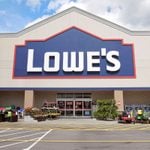John Deere Acquires Silicon Valley Robotics Firm

Is automated equipment the future? John Deere's $250 million purchase of Bear Flag Robotics suggests it is.
John Deere recently announced it bought Silicon Valley-based tech firm Bear Flag Robotics for $250 million. Four-year-old Bear Flag has developed autonomous driving technology that allows existing machines to run without a human operator. John Deere hopes to bring this technology to their farming equipment and accelerate development of its own autonomous equipment.
“Deere views autonomy as an important step forward in enabling farmers to leverage their resources strategically to feed the world and create more sustainable and profitable operations,” said Jahmy Hindman, John Deere’s chief technology officer. “Bear Flag’s team of talented agriculture professionals, engineers and technologists have a proven ability to deliver advanced technology solutions to market.”
Automated equipment might have felt like science fiction two decades ago, but the technology has taken several leaps forward in recent years. Now construction companies are using semi-autonomous robots to perform repetitive tasks on jobsites, and self-driving lawnmowers to cut the grass of an entire golf course without a human directing them.
John Deere’s hefty investment automation technology offers another sign that automated equipment will be a large part of the future of several industries.
Bear Hands Robotics, though, has a specific mission: To increase the global food supply amid a skilled labor shortage.
“One of the biggest challenges farmers face today is the availability of skilled labor to execute time-sensitive operations that impact farming outcomes,” said Igino Cafiero, co-founder and CEO of Bear Flag Robotics. “Autonomy offers a safe and productive alternative to address that challenge head on.
“Bear Flag’s mission to increase global food production and reduce the cost of growing food through machine automation is aligned with Deere’s and we’re excited to join the Deere team to bring autonomy to more farms.”


